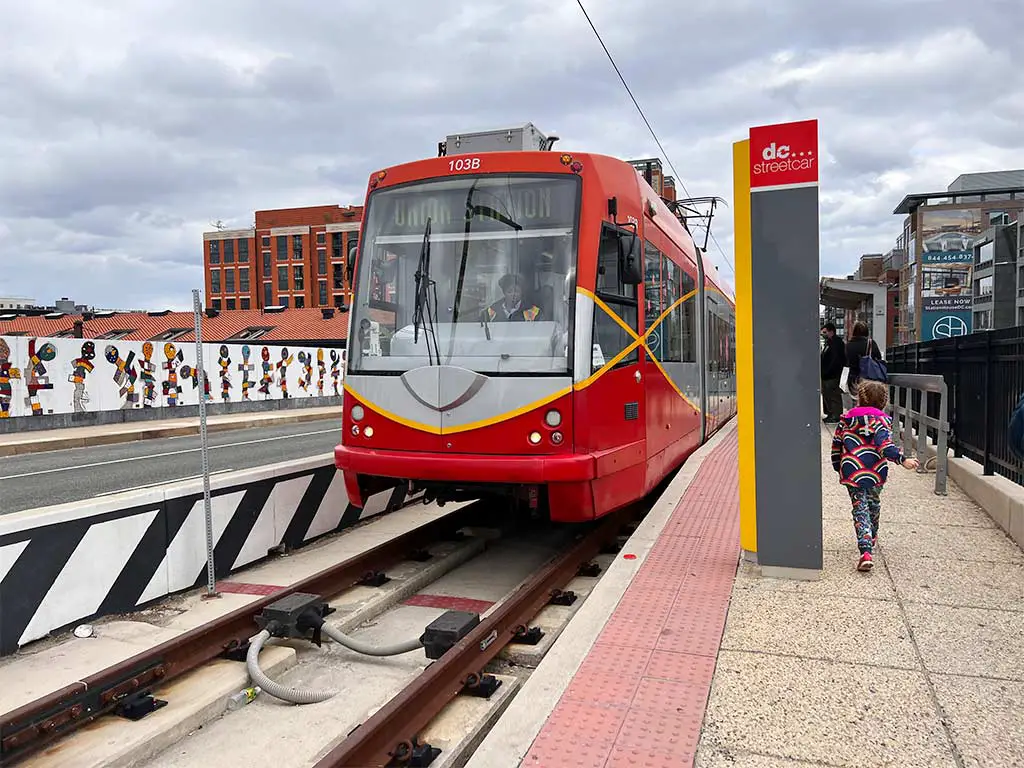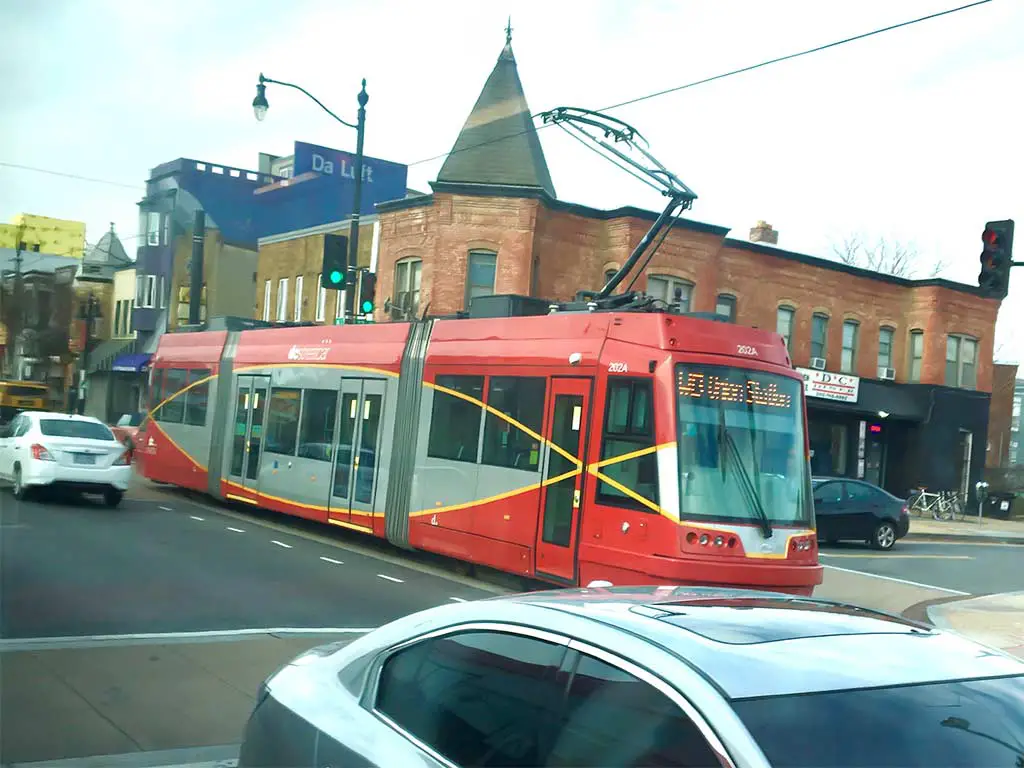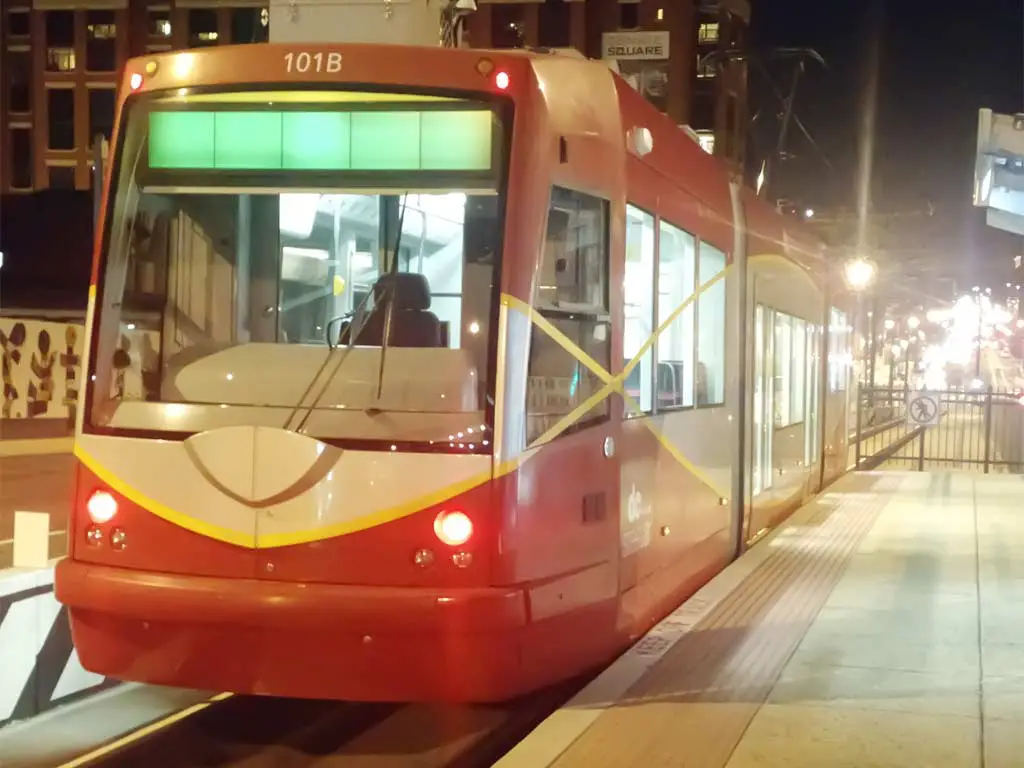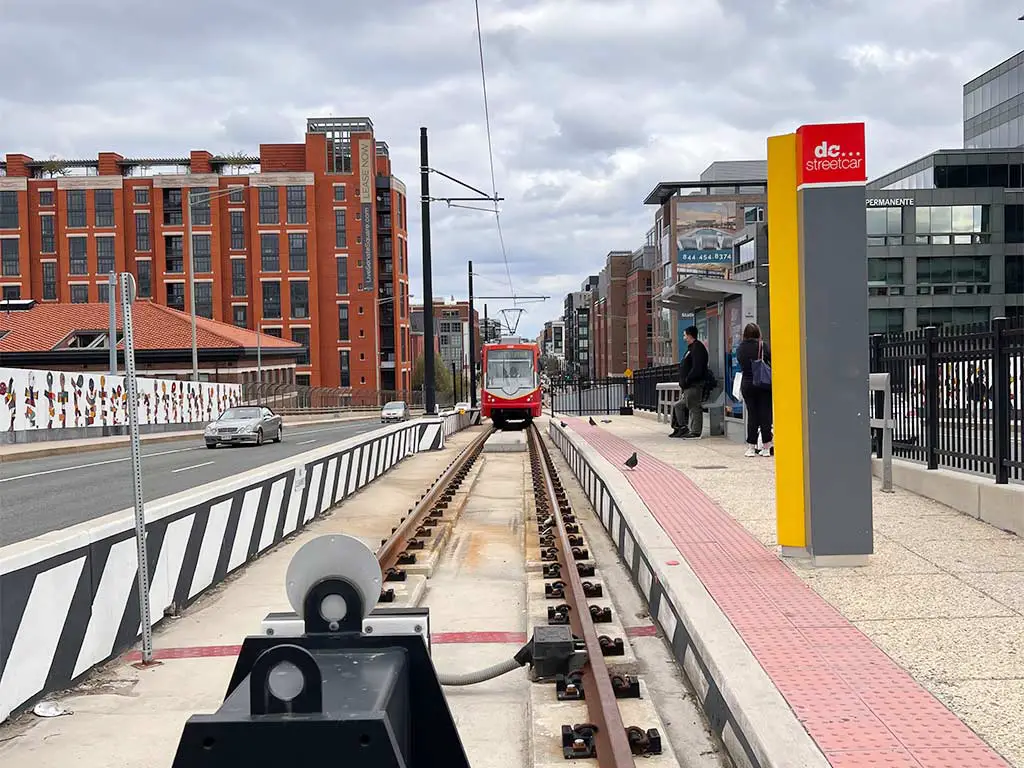Stepping back in time to Washington DC’s streetcar history unveils a captivating saga of transportation evolution.
The city’s streets once echoed with the clatter of horse-drawn carriages, marking the humble beginnings of its transit system in 1862.
Fast forward to 1888, and the introduction of electric streetcars revolutionized urban mobility, expanding routes into hilly terrains like the Anacostia neighborhood.
Witnessing the end of an era in January 1962, as car 766 made its final journey, nostalgia enveloped the Potomac, commemorating a century of streetcar service.
From the Capitol to the State Department, these iconic streetcars ferried passengers through the city’s changing landscape.
Join me in exploring the rich tapestry of Washington DC’s streetcar history through vintage footage, where the past comes alive with each clanging bell and rumbling wheel.
The Evolution of Washington DC’s Streetcar System

The evolution of Washington DC’s streetcar system reflects the city’s growth, changes in transportation technology, and urban development trends.
Let’s break it down into key stages:
Early Beginnings and Expansion
Exploring the roots of Washington DC’s streetcar system takes us back to the humble beginnings of horse-drawn carriages in 1862. However, the real transformation occurred in 1888 with the introduction of electric streetcars.
These modern vehicles revolutionized transportation in the city, offering a more efficient and reliable means of travel for residents and visitors alike.
The expansion of streetcar routes played a crucial role in connecting various neighborhoods, including the hilly terrain of the Anacostia neighborhood.
This expansion not only facilitated easier access to different parts of the city but also contributed to the growth and development of surrounding areas.
The streetcars became an integral part of daily life for many Washingtonians, providing a convenient way to navigate the city’s evolving landscape.
Decline and Phase-Out
Despite their popularity and historical significance, Washington DC’s streetcars faced a gradual decline leading to their eventual phase-out.
The end of an era came in January 1962 when the last streetcar made its final journey through the city streets.
Various factors, including the rise of alternative transportation modes and changing urban priorities, contributed to the demise of the iconic streetcars.
While the nostalgia surrounding the streetcar system remains strong, the city shifted its focus towards modernizing its transportation infrastructure.
The phase-out of streetcars paved the way for new developments and initiatives aimed at meeting the evolving needs of a growing metropolitan area.
Although the streetcars are no longer a part of Washington DC’s daily commute, their legacy lives on in the city’s rich history and the collective memories of those who once rode these iconic vehicles.
Revival of the Streetcars

The revival of Washington DC’s streetcars reflects a broader trend in urban transportation towards sustainable and efficient modes of transit.
Here’s an overview of the revival:
The H Street/Benning Road Initiative
I’ve got all the details on the H Street/Benning Road Initiative that contributed to the revival of streetcars in Washington DC. This project aimed to reintroduce streetcars to the city after their discontinuation in 1962.
The H Street/Benning Road Line, launched in 2016, became the first streetcar line to operate in the District in over 50 years, marking a significant milestone in revitalizing this mode of transportation.
The initiative brought modern streetcars back to the streets of DC, providing residents and visitors with a convenient and sustainable way to travel within the city.
The H Street/Benning Road Line covers a route that connects the H Street Corridor with the Benning Road area, enhancing accessibility and connectivity for passengers.
This project not only aimed to improve transportation options but also to boost economic development along the streetcar route.
Future Projects and Expansion Plans
As I delve into the future projects and expansion plans for Washington DC’s streetcar system, it’s evident that the city is committed to further developing this mode of transportation.
With the success of the H Street/Benning Road Line, there is growing enthusiasm for expanding the streetcar network to serve more neighborhoods and enhance urban mobility.
Plans are underway to extend the streetcar lines to additional areas across the city, creating a more extensive and interconnected network.
These expansion projects aim to address transportation needs, reduce traffic congestion, and promote sustainable modes of travel within Washington DC.
By integrating streetcars into the city’s transportation infrastructure, DC can continue to honor its streetcar history while embracing modern innovations in public transit.
Impact of Streetcars on Urban Development

The introduction and expansion of streetcar systems can have significant impacts on urban development.
Here’s how streetcars have influenced urban development in Washington DC and other cities:
Economic Influence
The introduction of streetcars in Washington DC played a pivotal role in shaping the city’s economic landscape.
By providing an accessible and efficient mode of transport, streetcars connected various neighborhoods, allowing for easier movement of people and goods.
This connectivity facilitated the growth of businesses along streetcar lines, attracting investments and fostering economic development.
The increased mobility offered by streetcars boosted commerce, as more residents could travel conveniently to shops and markets, stimulating economic activity in the city.
Urban Renewal and Community Connectivity
Streetcars were not just a means of transportation but also agents of urban renewal and community connectivity in Washington DC.
The expansion of streetcar networks often led to the development of new neighborhoods and the revitalization of existing ones.
Streetcars enabled residents to access employment opportunities, schools, and recreational facilities, fostering a sense of community and interconnectedness.
The presence of streetcar lines encouraged urban development along their routes, shaping the city’s layout and contributing to the creation of vibrant, mixed-use neighborhoods.
Additionally, streetcars promoted social interactions among residents, enhancing the overall livability and cohesion of the city.
Challenges and Controversies

The revival of streetcars in Washington DC, like in many other cities, has faced its fair share of challenges and controversies.
Here are some of the key ones:
Technical and Financial Hurdles
Navigating the implementation of Washington DC’s streetcar system has been fraught with technical and financial challenges over the years.
The revival of streetcars in the city faced significant hurdles, including delays in construction, budget overruns, and technical complexities.
The Anacostia Line, for instance, experienced setbacks, with the initial cost estimates of $10 million ballooning to $45 million for construction.
Delays in completing the Anacostia streetcar line, initially scheduled for the spring of 2008, pushed the deadline to at least 2012, causing further financial strain and operational challenges.
Public Reception and Criticism
While the idea of reintroducing streetcars to Washington DC aimed to enhance transportation options and boost economic development, the initiative was met with mixed public reception and criticism.
Local residents expressed concerns about increased traffic congestion, reduced bus services, and limited parking spaces due to the streetcar tracks.
Moreover, disputes with CSX over the railway track ownership prompted a shift in plans from utilizing existing railroad tracks to running the streetcars on city streets.
This change further fueled discontent among residents, highlighting the challenges of balancing transportation innovation with community needs and preferences.
Frequently Asked Questions
What is the history of Washington DC’s streetcar system?
Washington DC’s streetcar system began in 1862 and was discontinued in 1962. It played a crucial role in city connectivity and growth, connecting neighborhoods, fostering business growth, and stimulating economic activity.
What was the economic impact of streetcars on urban development?
Streetcars had a significant economic impact on urban development by enhancing transportation options, boosting economic development, and improving connectivity.
What challenges did the H Street/Benning Road Initiative face in 2016?
The H Street/Benning Road Initiative faced challenges such as delays in construction, budget overruns, and technical complexities, particularly with the Anacostia Line.
Conclusion
Reflecting on Washington DC’s streetcar history reveals a rich tapestry of urban development, economic impact, and community connectivity.
The evolution of the streetcar system from its inception in 1862 to the modern-day challenges faced by initiatives like the H Street/Benning Road Initiative showcases the complex interplay between transportation innovation and community needs.
Despite setbacks and controversies, the legacy of streetcars in shaping neighborhoods, fostering business growth, and stimulating economic activity remains evident.
As we navigate the future of transportation in the nation’s capital, the lessons learned from the past provide valuable insights into balancing progress with preserving the fabric of our communities.
The journey of Washington DC’s streetcars is a testament to the enduring significance of urban mobility in shaping the identity and vitality of a city.




Allison Brice